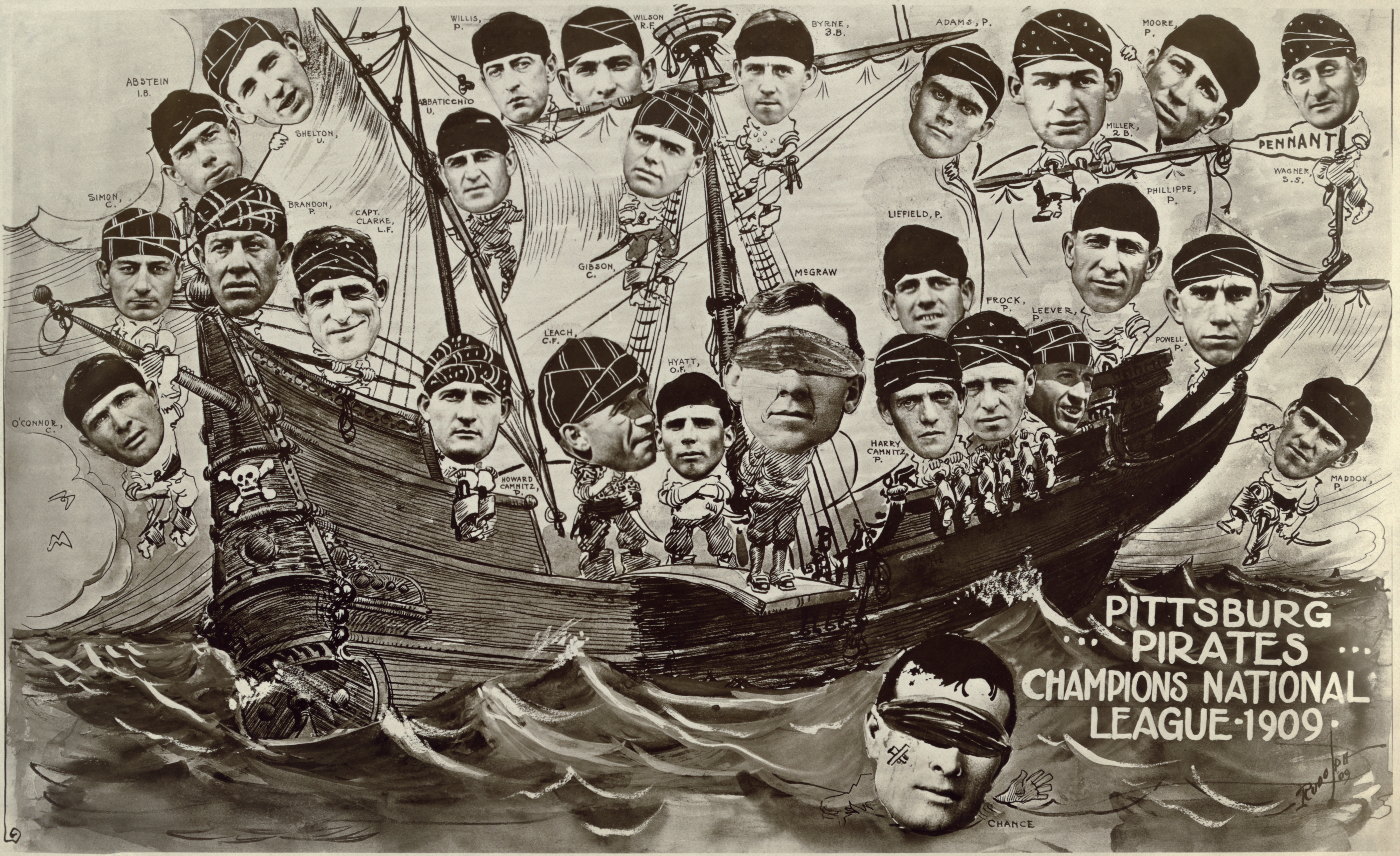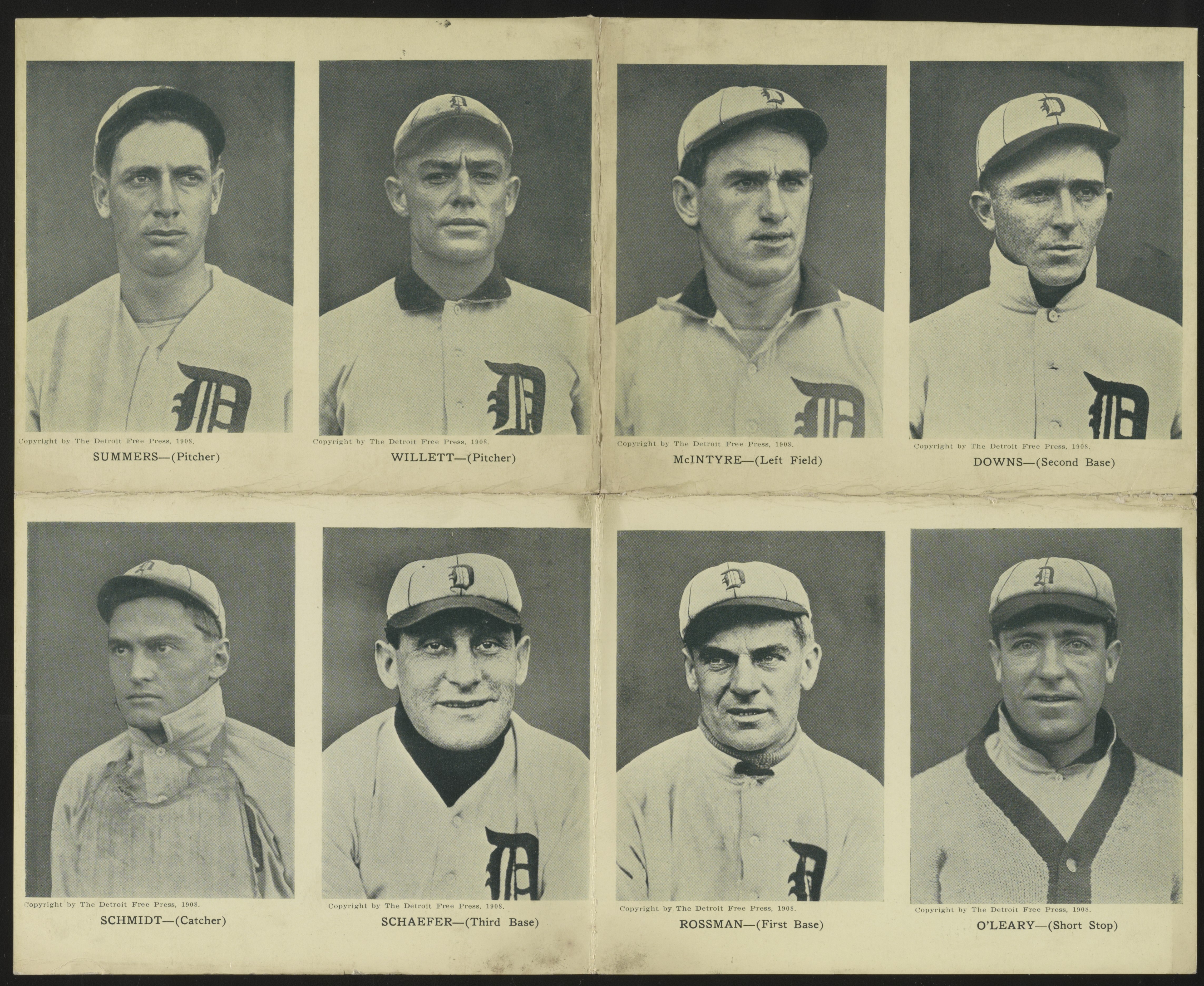|
Ed Willett
Robert Edgar Willett (March 7, 1884 – May 10, 1934), sometimes known by the nickname "Farmer", was a right-handed American baseball pitcher. He played professional baseball for 17 years from 1905 to 1921, including ten seasons in Major League Baseball with the Detroit Tigers of the American League from 1906 to 1913 and the St. Louis Terriers of the Federal League from 1914 to 1915. In 274 major league games, Willett compiled a 102–100 win–loss record with 142 complete games, an earned run average (ERA) of 3.08, 600 strikeouts, and 695 assists in 1,773 innings pitched. Early years Willett was born in Norfolk, Virginia, in 1884. He moved to Caldwell, Kansas, in his youth. Professional baseball career Wichita Jobbers Willett began his professional baseball career in the Western Association, playing for the Wichita Jobbers in 1905 and 1906. He compiled a 10–5 win–loss record with a 2.69 earned run average (ERA) in 16 games during the 1905 season and a 12–17 record ... [...More Info...] [...Related Items...] OR: [Wikipedia] [Google] [Baidu] |
Pitcher
In baseball, the pitcher is the player who throws ("pitches") the baseball from the pitcher's mound toward the catcher to begin each play, with the goal of retiring a batter, who attempts to either make contact with the pitched ball or draw a walk. In the numbering system used to record defensive plays, the pitcher is assigned the number 1. The pitcher is often considered the most important player on the defensive side of the game, and as such is situated at the right end of the defensive spectrum. There are many different types of pitchers, such as the starting pitcher, relief pitcher, middle reliever, lefty specialist, setup man, and the closer. Traditionally, the pitcher also bats. Starting in 1973 with the American League(and later the National League) and spreading to further leagues throughout the 1980s and 1990s, the hitting duties of the pitcher have generally been given over to the position of designated hitter, a cause of some controversy. The Japanese Central Le ... [...More Info...] [...Related Items...] OR: [Wikipedia] [Google] [Baidu] |
Caldwell, Kansas
Caldwell is a city in Sumner County, Kansas, United States. As of the 2020 census, the population of the city was 1,025. History Near Caldwell is a precontact Plains Village period settlement called the Buresh site, which has yielded clues about Native American lifeways prior to the arrival of people of European and African descent. Caldwell was founded in 1871. It is named for Senator Alexander Caldwell. Caldwell was incorporated as a city in 1879. The first post office in Caldwell was established in May 1871. The Chisholm Trail ran along the east side of the community from 1867 to 1871. In 1887, the Chicago, Kansas and Nebraska Railway built a branch line north-south from Herington to Caldwell. This branch line connected Herington, Lost Springs, Lincolnville, Antelope, Marion, Aulne, Peabody, Elbing, Whitewater, Furley, Kechi, Wichita, Peck, Corbin, Wellington, Caldwell. This branch line was extended to Pond Creek, Oklahoma in 1888, and connected Caldwell, R ... [...More Info...] [...Related Items...] OR: [Wikipedia] [Google] [Baidu] |
Home Runs
In baseball, a home run (abbreviated HR) is scored when the ball is hit in such a way that the batter is able to circle the bases and reach home plate safely in one play without any errors being committed by the defensive team. A home run is usually achieved by hitting the ball over the outfield fence between the foul poles (or hitting either foul pole) without the ball touching the field. Far less common is the "inside-the-park" home run where the batter reaches home safely while the baseball is in play on the field. When a home run is scored, the batter is credited with a hit and a run scored, and a run batted in ( RBI) for each runner that scores, including himself. Likewise, the pitcher is recorded as having given up a hit and a run, with additional runs charged for each runner that scores other than the batter. Home runs are among the most popular aspects of baseball and, as a result, prolific home run hitters are usually the most popular among fans and consequently th ... [...More Info...] [...Related Items...] OR: [Wikipedia] [Google] [Baidu] |
Run (baseball)
In baseball, a run is scored when a player advances around first, second and third base and returns safely to home plate, touching the bases in that order, before three outs are recorded and all obligations to reach base safely on batted balls are met or assured. A player may score by hitting a home run or by any combination of plays that puts him safely "on base" (that is, on first, second, or third) as a runner and subsequently brings him home. Once a player has scored a run, they may not attempt to score another run until their next turn to bat. The object of the game is for a team to score more runs than its opponent. The Official Baseball Rules hold that if the third out of an inning is a force out of a runner advancing to any base then, even if another baserunner crosses home plate before that force out is made, his run does not count. However, if the third out is not a force out, but a tag out, then if that other baserunner crosses home plate before that tag out is made, ... [...More Info...] [...Related Items...] OR: [Wikipedia] [Google] [Baidu] |
Batting Average (baseball)
In baseball, batting average (BA) is determined by dividing a player's hits by their total at-bats. It is usually rounded to three decimal places and read without the decimal: A player with a batting average of .300 is "batting three-hundred". If necessary to break ties, batting averages could be taken beyond the .001 measurement. In this context, .001 is considered a "point", such that a .235 batter is 5 points higher than a .230 batter. History Henry Chadwick, an English statistician raised on cricket, was an influential figure in the early history of baseball. In the late 19th century he adapted the concept behind the cricket batting average to devise a similar statistic for baseball. Rather than simply copy cricket's formulation of runs scored divided by outs, he realized that hits divided by at bats would provide a better measure of individual batting ability. This is because while in cricket, scoring runs is almost entirely dependent on one's batting skill, in baseball ... [...More Info...] [...Related Items...] OR: [Wikipedia] [Google] [Baidu] |
Mordecai Brown
Mordecai Peter Centennial Brown (October 19, 1876 – February 14, 1948), nicknamed Three Finger Brown or Miner, was an American Major League Baseball pitcher and manager during the first two decades of the 20th century (known as the "dead-ball era"). Due to a farm-machinery accident in his youth (April 17, 1888), Brown lost parts of two fingers on his right hand, and in the process gained a colorful nickname. He turned this handicap into an advantage by learning how to grip a baseball in a way that resulted in an exceptional curveball (or knuckle curve), which broke radically before reaching the plate. With this technique he became one of the elite pitchers of his era. Brown was elected to the Baseball Hall of Fame in 1949. Early life Brown was born in Nyesville, Indiana. He was also known as "Miner", having worked in western Indiana coal mines for a while before beginning his professional baseball career. Nicknames like "Miner" (or misspelled as "Minor") and "Three Finger" (or s ... [...More Info...] [...Related Items...] OR: [Wikipedia] [Google] [Baidu] |
1909 Pittsburgh Pirates Season
The 1909 Pittsburgh Pirates season was the 28th season for the Pittsburgh Pirates franchise, during which they won the National League pennant with a record of 110–42 and their first World Series over the Detroit Tigers. Led by shortstop Honus Wagner and outfielder-manager Fred Clarke, the Pirates scored the most runs in the majors. Wagner led the league in batting average, on-base percentage, slugging percentage, and runs batted in. Pirates owner Barney Dreyfuss opened the Pirates' new ballpark, named Forbes Field, on June 30, 1909. The Pirates' 110 wins remain a team record, a record they set in the last game of the season by beating the Cincinnati Reds 7–4 in muddy conditions on October 5. It is in fact the best regular season win percentage by any World Series winning team. Regular season Season standings Record vs. opponents Notable transactions * May 28, 1909: Ward Miller and cash were traded by the Pirates to the Cincinnati Reds for Blaine Durbin. Roster Pl ... [...More Info...] [...Related Items...] OR: [Wikipedia] [Google] [Baidu] |
1909 World Series
The 1909 World Series was the championship series in Major League Baseball for the 1909 season. The sixth edition of the World Series, it featured the National League champion Pittsburgh Pirates against the American League champion Detroit Tigers. The Pirates won the Series in seven games to capture their first championship of the modern Major League Baseball era and the second championship in the club's history. This Series is best remembered for featuring two of the very best players of the time, Pittsburgh shortstop Honus Wagner, and Detroit outfielder Ty Cobb. Series recap Sites: games 1, 2 in Pittsburgh; games 3, 4 in Detroit; game 5 in Pittsburgh; games 6, 7 in Detroit. The Pirates had won the National League pennant in 1909 behind the brilliant play of Honus Wagner, who led the league with a .339 batting average and 100 runs batted in. Detroit returned for their third consecutive Fall Classic, determined to erase the memories of their previous efforts. The Tigers were a ... [...More Info...] [...Related Items...] OR: [Wikipedia] [Google] [Baidu] |
1908 Detroit Tigers Season
The 1908 Detroit Tigers season was a season in American baseball. The team won the American League championship by means of a scheduling quirk, finishing just one-half game ahead of the Cleveland Naps. The two teams won the same number of games, but the Tigers completed and lost one fewer. They then lost to the Chicago Cubs in the 1908 World Series. Regular season The early part of the season was defined in part by Ty Cobb's contract dispute with the team. He claimed that the owners have too much power. Eventually Cobb settled for a $4,800 contract.Crazy '08: How a cast of Cranks, Rogues, Boneheads and Magnates created the Greatest Year in Baseball History, p. 71, by Cait Murphy, Smithsonian Books, a Division of Harper Collins, 2007, After opening day, the Tigers averaged only 4,400 fans per game. Season standings Record vs. opponents Roster Player stats Batting Starters by position ''Note: Pos = Position; G = Games played; AB = At bats; H = Hits; Avg. = Batting aver ... [...More Info...] [...Related Items...] OR: [Wikipedia] [Google] [Baidu] |
Ed Willett Baseball Card
Ed, ed or ED may refer to: Arts and entertainment * ''Ed'' (film), a 1996 film starring Matt LeBlanc * Ed (''Fullmetal Alchemist'') or Edward Elric, a character in ''Fullmetal Alchemist'' media * ''Ed'' (TV series), a TV series that ran from 2000 to 2004 Businesses and organizations * Ed (supermarket), a French brand of discount stores founded in 1978 * Consolidated Edison, from their NYSE stock symbol * United States Department of Education, a department of the United States government * Enforcement Directorate, a law enforcement and economic intelligence agency in India * European Democrats, a loose association of conservative political parties in Europe * Airblue (IATA code ED), a private Pakistani airline * Eagle Dynamics, a Swiss software company Places * Ed, Kentucky, an unincorporated community in the United States * Ed, Sweden, a town in Dals-Ed, Sweden * Erode Junction railway station, station code ED Health and medicine * Eating disorder, mental disorders defin ... [...More Info...] [...Related Items...] OR: [Wikipedia] [Google] [Baidu] |




.jpg)


